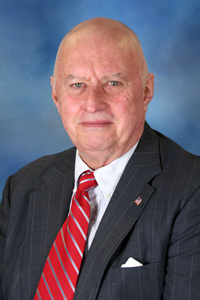Remembering Marquette Football
 Today (Nov. 13) is the 52nd anniversary of Marquette’s final varsity football game. The tradition-ending contest pitted Marquette against the University of Cincinnati Bearcats before a crowd of 13,000 at the long-disappeared Marquette Stadium at Merrill Park on November 13, 1960.
Today (Nov. 13) is the 52nd anniversary of Marquette’s final varsity football game. The tradition-ending contest pitted Marquette against the University of Cincinnati Bearcats before a crowd of 13,000 at the long-disappeared Marquette Stadium at Merrill Park on November 13, 1960.
Marquette had begun the 1960 football season with great enthusiasm. After losing the first seven games of the 1959 season, the rebuilding Warriors won their final three games with victories over North Dakota State, Cincinnati, and Holy Cross. In the three games, Marquette outscored its opponents, 113-46.
The 1960 season began with more successes, as Marquette defeated Villanova 23-13 at home in the season opener and then travelled to the West Coast where it blanked Pacific, 20-0.
However, the winning streak came to an end the next week in Madison when the Warriors fell to the Badgers 35-6. (Marquette played Wisconsin 28 times in football over the years, and, somewhat bizarrely, all 28 games were played in Madison. In those games, Marquette was only 4-24, raising questions as to who did the scheduling in those days.)
Marquette returned to its winning ways the following week when it eked out a 13-12 home victory over arch-rival Boston College.
However, after the BC Game, the Marquette train slid off the rails. A road trip by the heavily favored Warriors to Bloomington, Indiana, to play the winless University of Indiana resulted in a 34-8 defeat.
The return home the following Saturday witnessed a 23-6 loss to Vanderbilt, another winless team. (Although to be fair to Vanderbilt, three of the Commodores losses at that point were to Mississippi, Alabama, and Florida who finished the season ranked #2, #9, and #18 in the AP poll. The remaining loss was to Georgia, which lost only to Alabama, Florida, nationally ranked Auburn, and the University of Southern California in 1960. Even fifty years ago, the Southeastern Conference was a dominant league.)
A subsequent two-week road trip resulted in upset losses to Detroit Mercy and Holy Cross and ended the possibility of the school having its first winning football season since 1953. Sportswriters blamed the downward spiral on the erratic play of the team’s three quarterbacks and its general lack of speed.
In its season’s ending game with Cincinnati, Marquette faced a team with an identical record (3-5), an even longer losing streak (five games versus four), and a nearly identically named coach. (Marquette was coached by Lisle Blackbourn and Cincinnati by George Blackburn, who had already been told that he would not be the coach in 1961.)
Although the Associated Press made Cincinnati the favorite, the Milwaukee Journal predicted a victory for the home-standing Warriors.
Alas, it was not to be. Marquette star halfback Dave Thiesen was injured early in the game, and his replacements could not pick up the slack, as the home team managed only two first downs in the opening half. Meanwhile, Cincinnati raced to a 19-0 halftime lead.
Although the Marquette defense shut out the Bearcats in the third quarter, and the Marquette offense twice drove inside the Cincinnati 10-yard line, the Warriors could not cross the Bearcat goal line. (In an era of one-platoon football, starters played both offense and defense, and if taken out of the game could not return until the next quarter.)
In a more wide-open fourth quarter, both teams put two touchdowns on the board, with the final Marquette touchdown scored by end George Andrie, later an NFL All-Pro with the Dallas Cowboys. The final score was Cincinnati 33, Marquette 13.
Of course, no one on November 13, 1960, knew that this would be the last Marquette football game ever. With only eight seniors on the 1960 squad, and with both Thiesen and Andrie returning, the prospects for a winning season in 1961 seemed quite favorable. On December 1, 1960, the team held its final meeting of the fall and elected captains for the next season.
The fateful announcement came nine days later on December 9, 1960, when the Rev. Edward J. O’Donnell, the president of Marquette since 1948, declared an immediate end to Marquette football. There would be no 1961 season.
When the announcement came without warning, it shocked the Marquette football team, the Marquette campus, and Marquette fans everywhere, some of whom have not recovered to this day.

